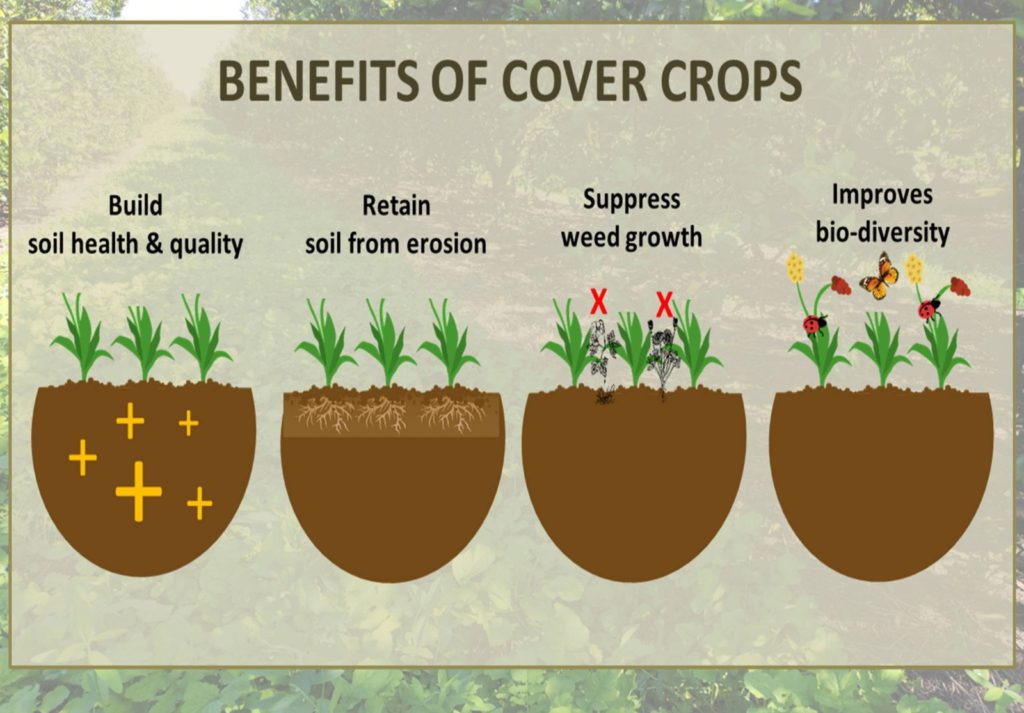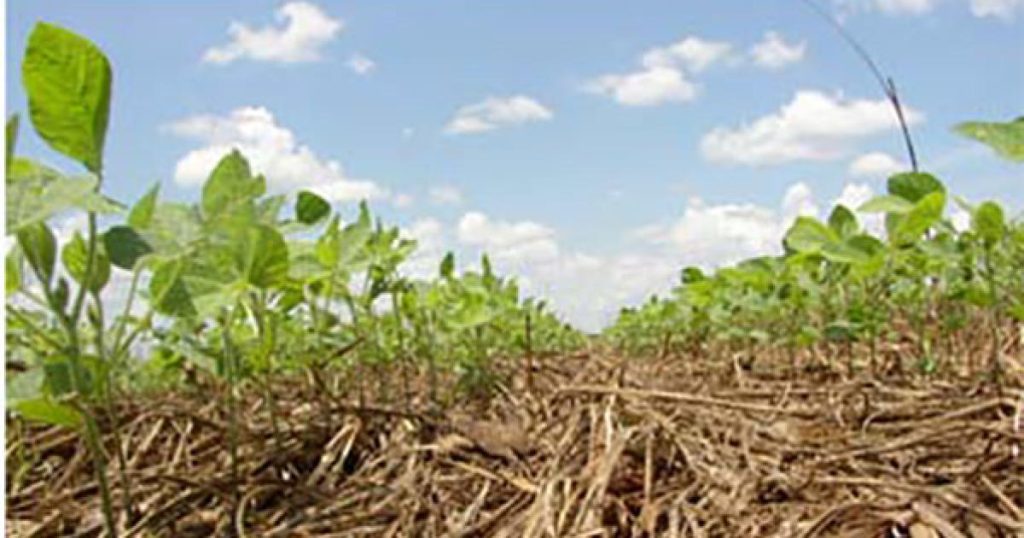Imagine a garden or farm where the soil is rich, full of life, and ready to nurture your plants. This dream can become your reality with the right cover crops.
These unsung heroes of agriculture can transform even the most stubborn soil into a gardener’s paradise. By choosing the best cover crops, you can improve your soil structure, boost nutrient content, and enhance water retention, all while reducing erosion. Are you ready to unlock the secret to healthier soil?
Dive into this article to discover which cover crops can revitalize your land and why they’re a must-have for any serious gardener or farmer. You’ll find that the right cover crops aren’t just a choice—they’re a game changer for your soil’s future.

Leguminous Cover Crops
Leguminous cover crops are a great choice for soil improvement. They belong to the legume family. These plants are known for their ability to fix nitrogen. This makes them beneficial for enriching the soil. Leguminous cover crops help build soil structure. They add essential nutrients to the earth. This process supports healthy plant growth. Let’s explore some popular leguminous cover crops.
Peas
Peas are a popular choice for cover crops. They enhance soil fertility by fixing nitrogen. Peas grow quickly and easily. They improve soil texture and structure. Their deep roots break up compact soil.
Beans
Beans offer great benefits for soil health. They fix nitrogen, enriching the soil. Their roots improve soil aeration. Beans grow well in many conditions. They help maintain soil moisture.
Alfalfa
Alfalfa is a versatile leguminous cover crop. It is excellent for improving soil structure. Its deep roots help prevent erosion. Alfalfa fixes nitrogen effectively. This enhances soil nutrient levels.
Vetch
Vetch is a hardy leguminous cover crop. It provides nitrogen to the soil. Vetch grows well in different climates. It helps improve soil texture. It also supports other plants’ growth.
:max_bytes(150000):strip_icc()/cover-crops-for-your-small-farm-3016670-78ed01311a8847a5b085f0128181f370.jpg)
Grass Cover Crops
Choosing the right grass cover crops can greatly enhance soil structure. Rye and clover are popular choices. These crops reduce soil erosion and improve nutrient levels. They also promote healthy root systems. This makes the soil more fertile and robust.
Grass cover crops are a fantastic choice for improving soil structure. These crops are not only easy to manage but also pack a punch when it comes to boosting soil health. By planting grass cover crops, you can create a robust soil ecosystem that supports better water retention, nutrient availability, and erosion control.Benefits Of Grass Cover Crops
Grass cover crops provide numerous benefits for your garden or farm. They help break up compacted soil, allowing roots to penetrate deeper. This improves the soil’s ability to absorb and retain water. Grass cover crops also add organic matter to the soil as they decompose. This boosts microbial activity, enriching the soil’s fertility. Moreover, these crops act as a natural barrier against soil erosion. They protect the soil from harsh weather conditions and reduce nutrient runoff.Types Of Grass Cover Crops
Choosing the right grass cover crop depends on your specific needs and climate. Ryegrass is a popular option due to its fast growth and adaptability to different soil types. Oats are another excellent choice, especially in cooler climates. They provide quick ground cover and are easy to manage. If you have a warmer climate, consider using millet. It thrives in heat and can improve soil structure significantly.How To Plant Grass Cover Crops
Planting grass cover crops is straightforward. Start by preparing the soil—remove weeds and debris to ensure a clean planting area. Broadcast the seeds evenly over the soil surface. Lightly rake the soil to cover the seeds, ensuring good seed-to-soil contact. Water the area gently to keep the soil moist, aiding germination. Consistent moisture is key to successful establishment.Maintaining Grass Cover Crops
Maintenance is minimal, but it’s essential to keep an eye on growth. Regular mowing can prevent the grass from becoming too tall and unmanageable. Consider your goals for the cover crop. If you aim to add organic matter, allow the grass to grow longer before mowing. After the growing season, you can till the grass into the soil. This adds nutrients and improves soil structure.Personal Experience With Grass Cover Crops
I remember the first time I planted ryegrass in my backyard garden. It was incredible to see how quickly it transformed the soil. The once hard-packed earth became loose and rich, full of life. My vegetables thrived, and I spent less time watering and dealing with erosion. Have you ever tried grass cover crops in your garden or farm? What results did you notice, and how did they impact your soil health?Brassicas For Soil Health
Brassicas are exceptional cover crops for enhancing soil health. These plants belong to the mustard family and include species like radishes, turnips, and mustards. They are known for their ability to improve soil structure and boost fertility. Their deep roots break up compacted soil and create channels for air and water. Brassicas also help control weeds and reduce soil erosion.
Deep Root Systems
Brassicas have deep root systems. These roots penetrate hard soil layers. This helps improve water infiltration and reduces compaction. The roots also bring nutrients from deeper soil layers to the surface. This makes nutrients available for other plants.
Nutrient Scavenging
Brassicas excel in nutrient scavenging. They capture leftover nitrogen and other nutrients. This prevents nutrient leaching and enriches the soil. As they decompose, they release these nutrients back into the soil. This process enhances soil fertility for future crops.
Weed Suppression
Brassicas are effective at weed suppression. They grow quickly and cover the soil surface. This shades out weeds and reduces their growth. Additionally, some brassicas release chemicals that inhibit weed seed germination. This makes brassicas a natural weed control option.
Pest And Disease Control
Brassicas can help manage pests and diseases. Some species produce biofumigants that suppress soil-borne pathogens. This reduces the need for chemical pesticides. They also attract beneficial insects. These insects help control pest populations naturally.
Soil Erosion Prevention
Brassicas help in preventing soil erosion. Their dense foliage covers the soil surface. This reduces the impact of rain and wind. Their roots hold the soil firmly. This minimizes soil loss and maintains soil structure.
Mixed Species Blends
Mixed species blends offer a powerful solution for improving soil structure. By planting different types of cover crops together, you enhance soil health. This method promotes biodiversity, which boosts the ecosystem’s resilience. Each species in the mix contributes unique benefits, creating a more balanced soil environment.
Benefits Of Mixed Species Blends
Mixed species blends enhance nutrient cycling in the soil. Legumes fix nitrogen, while grasses add organic matter. This combination improves soil fertility over time.
Roots of different plants break up compacted soil layers. This process improves water infiltration and reduces erosion. The result is a more stable and productive soil structure.
Choosing The Right Species
Choose species that complement each other in growth habits. Fast-growing plants provide quick ground cover. Slow-growing species contribute long-term benefits. Consider climate and soil type when selecting species.
Popular choices include clover, radish, and oats. Each offers specific advantages to soil structure. Combining them maximizes the positive impact on your land.
Planting And Management Tips
Plant mixed species blends in the fall or early spring. Ensure seeds are evenly distributed across the area. This ensures optimal growth and coverage.
Regularly monitor the growth of cover crops. Adjust management practices based on their development. This ensures the best results for soil improvement.

Conclusion
Cover crops play a vital role in soil health. They improve structure and fertility. Choose crops that suit your climate and soil type. Rye and clover are popular options. They prevent erosion and add nutrients. Buckwheat and vetch offer great benefits too.
Planting cover crops reduces weeds naturally. They support healthy ecosystems. Experiment with different crops each season. Observe changes in soil texture and growth. This practice builds sustainable agriculture. Your soil becomes healthier and more productive. Enjoy the benefits of improved soil.
Keep nurturing your land with cover crops. Your garden will thank you.



